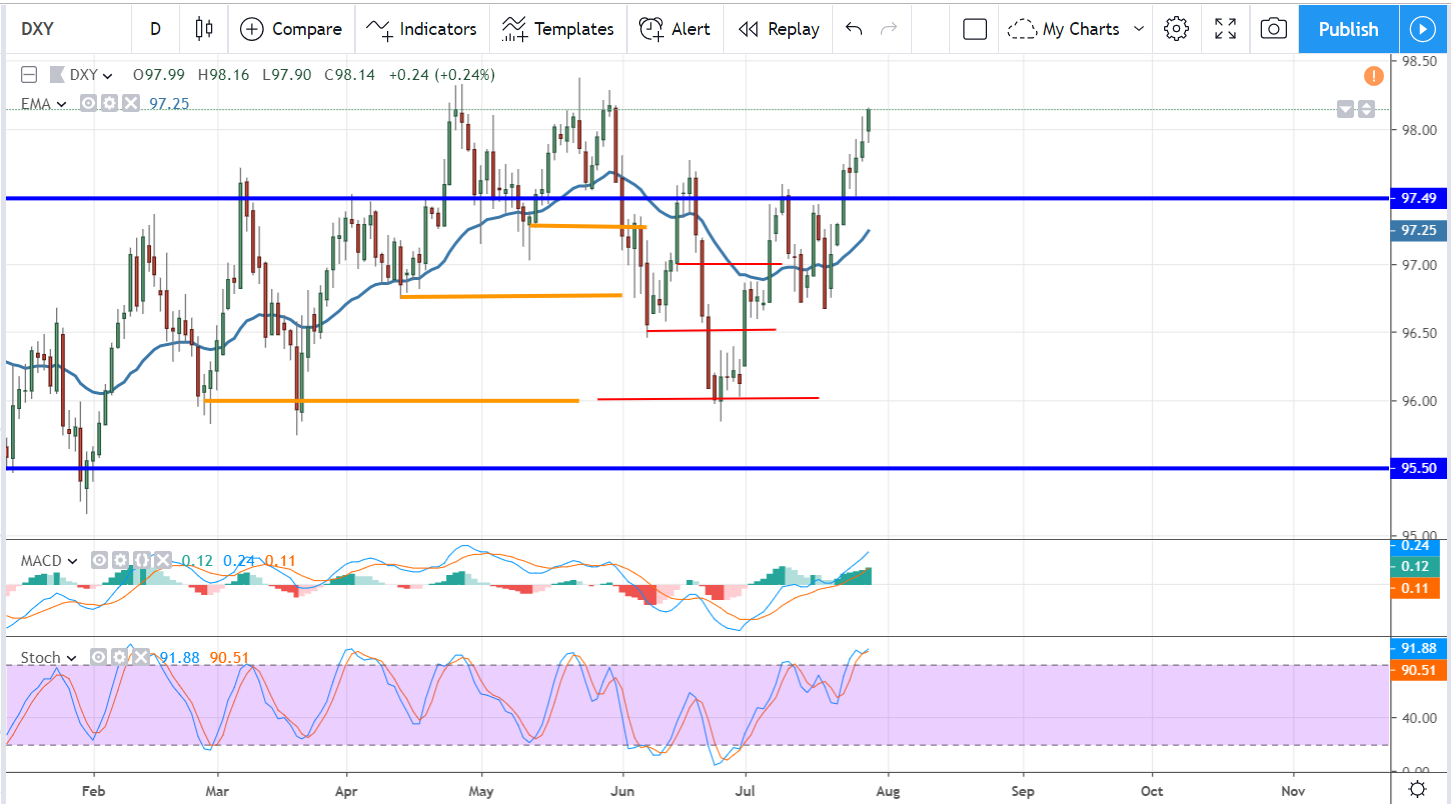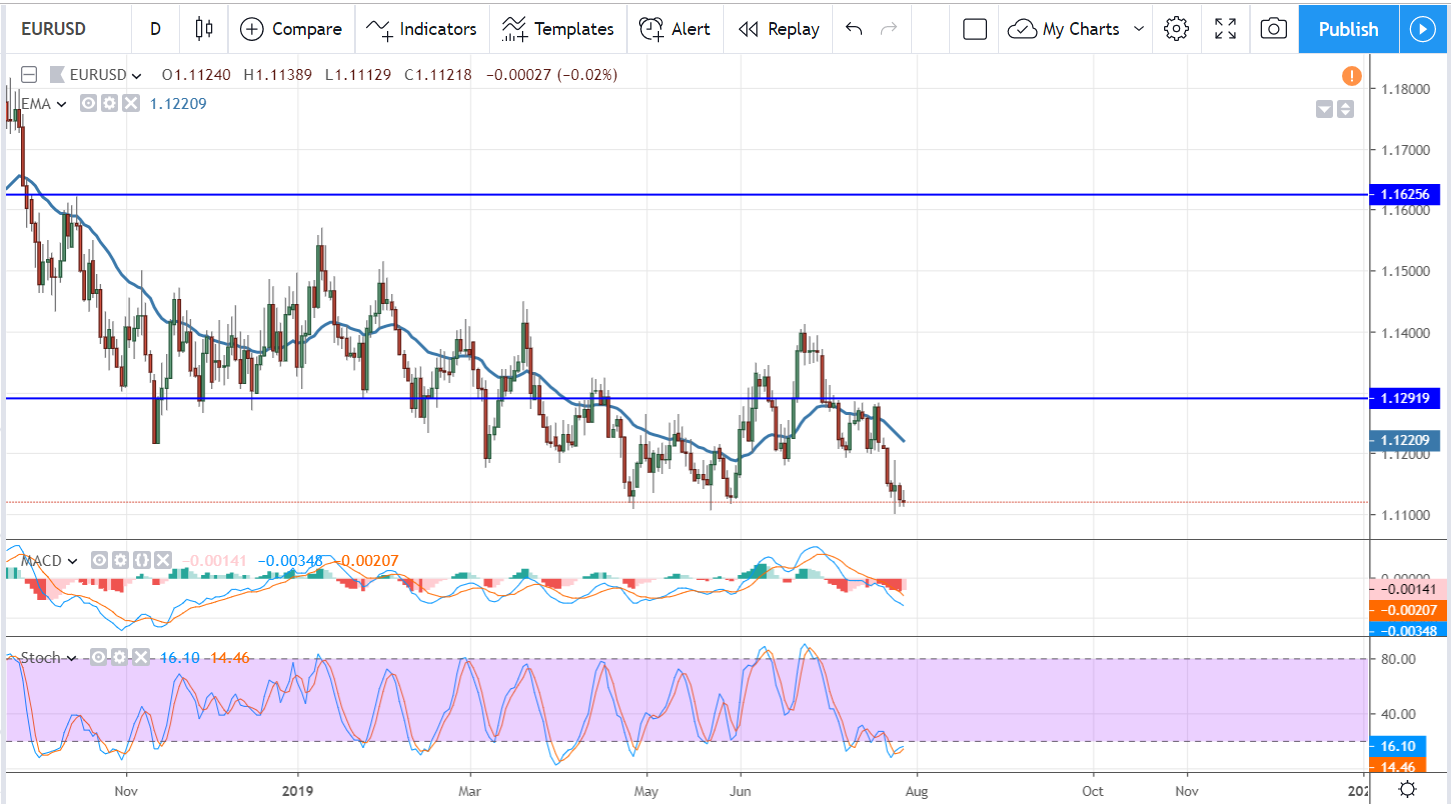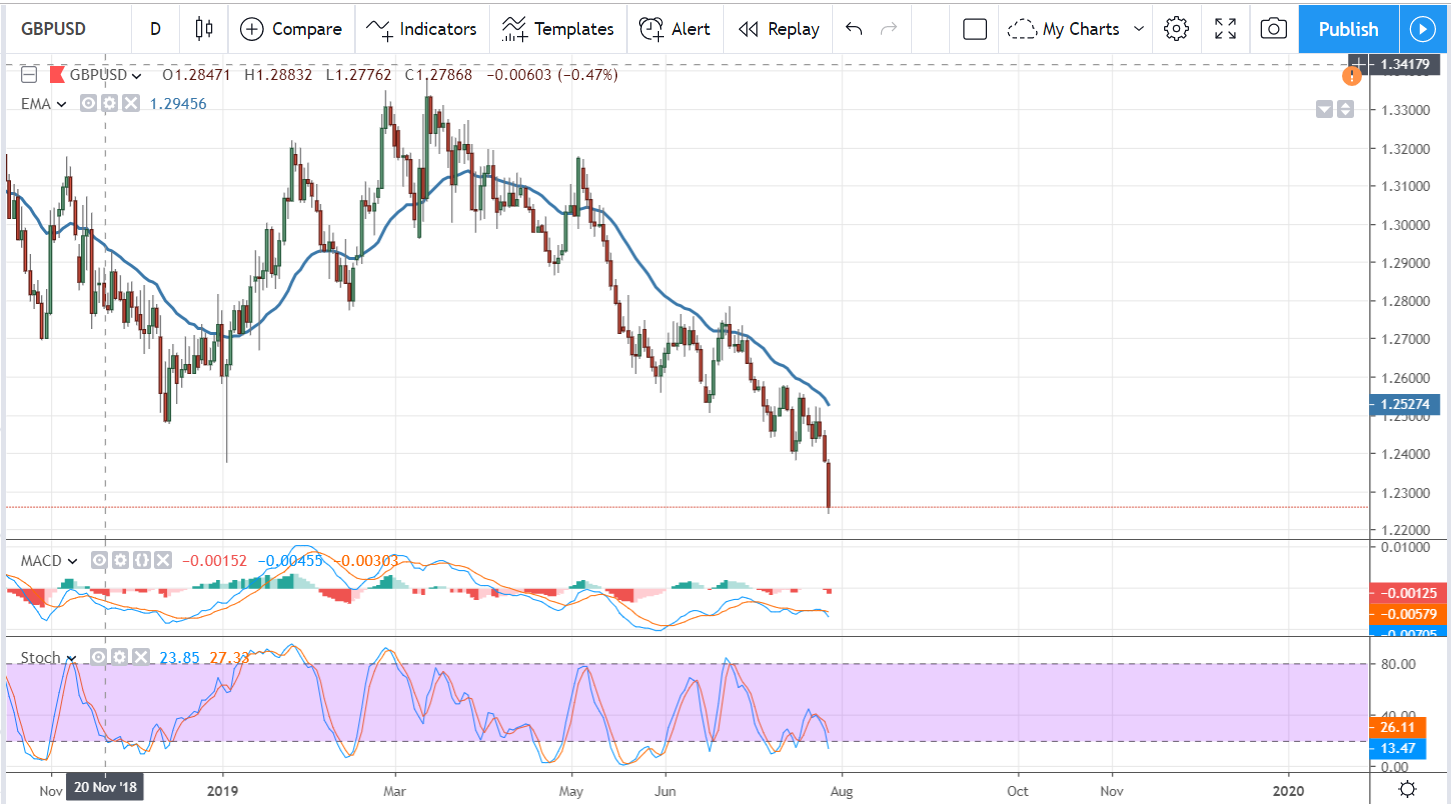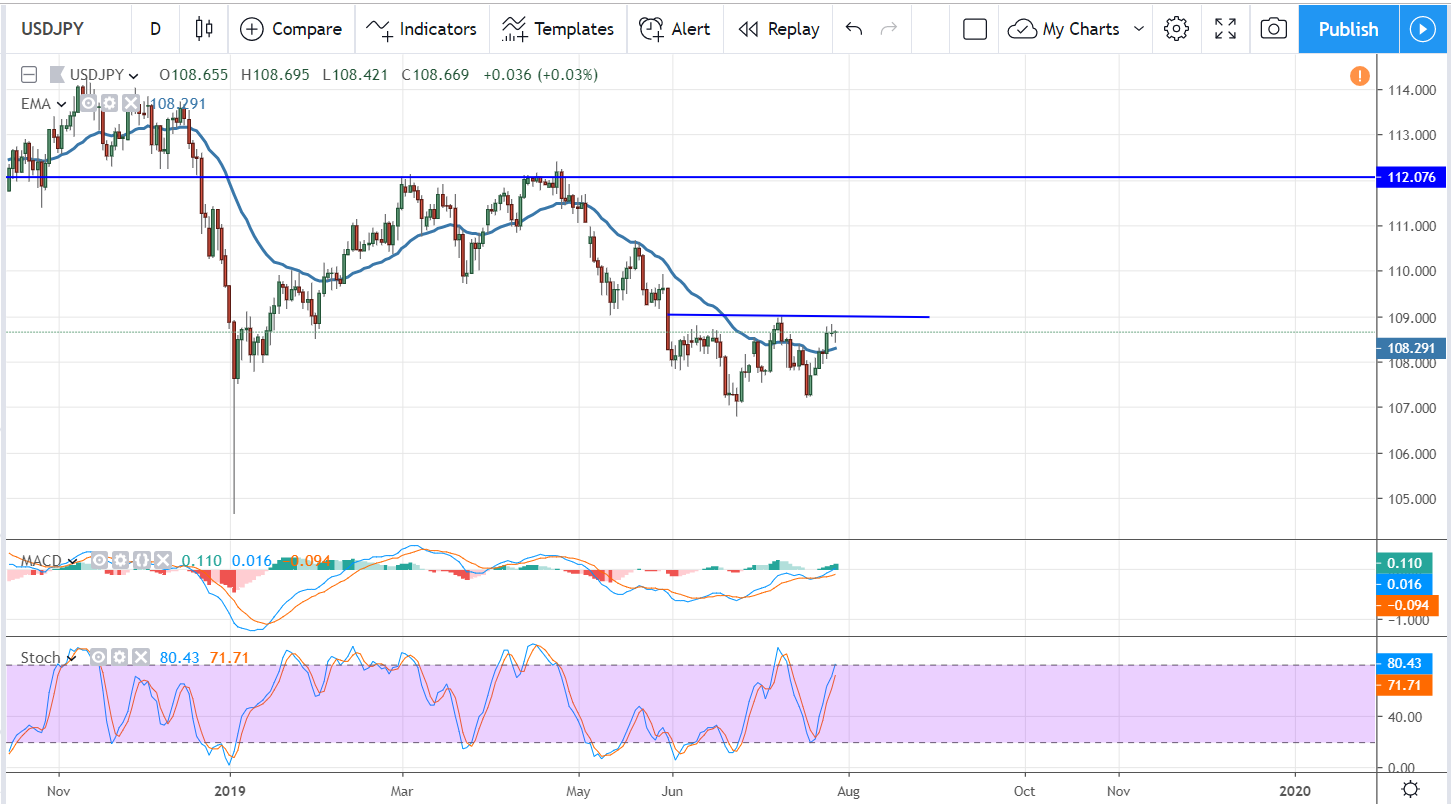This Is Why You Shouldn’t Be Bearish On The Dollar
The FOMC Is Set To Cut Rates
The FOMC is set to cut rates this week but traders should not expect the dollar to fall. While rate cuts are typically a currency-weakening event this cut is compounded by misplaced expectations and offset by dovishness from other central banks. The risk for traders is two-fold. First, the FOMC may not even cut rates the expected 25 bps. The reason why they might cut is because inflation is tepid and the trade war has outlook in the crapper. That said, the data does not support a cut in my opinion and the Fed is not well-known to front-run the market. The second risk is that the FOMC will not provide as dovish an outlook as expected. The market is looking for three cuts this year and frankly, one is highly questionable. We’d have to see a continued deterioration in the data AND the first cut would have to not work before there can be a second or a third. I just don’t see a patient FOMC moving that fast.
The Dollar Index is moving higher as I write this. Last week’s ECB policy statement and comments from Mario Draghi have set the euro up for cuts AND stimulus later this year and that has the dollar in rally mode. A less-than expected FOMC policy statement and forecast will have the index skyrocketing. For now, resistance is near $98.25, a move above that level would be bullish and likely take the index up to the $100 level or thereabout.
The EUR/USD set a fresh two-year low after the ECB policy statement. The pair is under pressure and likely to move lower. Support is currently near the 1.1100 level and the indicators suggest it will be tested and soon. A move below 1.1100 would be very significant because it will bring EUR/USD parity back into the picture. Parity is when the two currencies are equal in value, an event that has not happened since the early part of this century.
The GBP/USD is approaching a 25-year low. The move is driven by FOMC and BOE outlook more than anything else but the Brexit is playing a role. The candles are quite strong so I would expect to see this move continue based on price action. The indicators are bearish and confirm lower prices are on the way.
The USD/JPY is moving within a large, long-term trading range. The range is driven by the push-pull of economic activity and risk on/risk off sentiment surrounding the U.S./China trade war. The pair has just formed a double-bottom reversal pattern but it is not yet confirmed. The neckline is near 109.00 and likely to be tested or broken later this week. If it gets broken we can expect the pair to drift higher in the near-term until hitting the top of the range later this summer or in the early fall.



